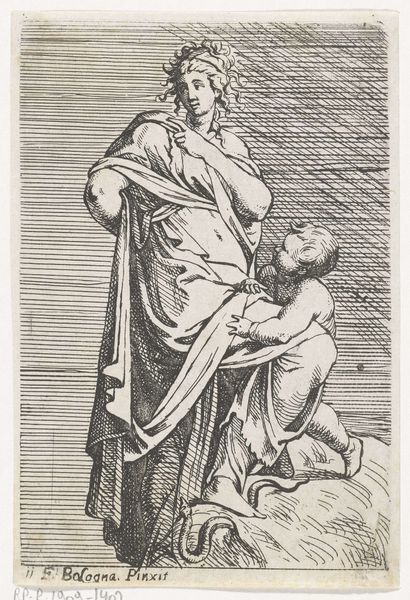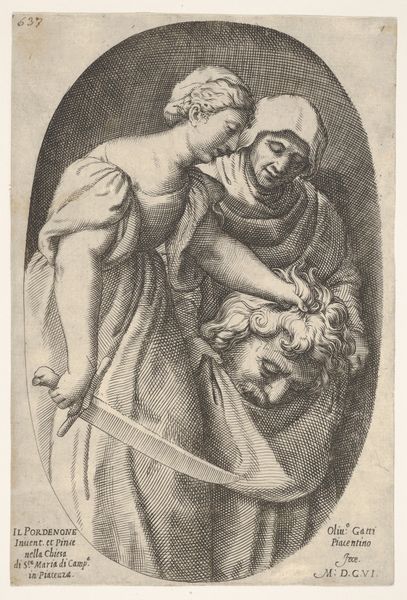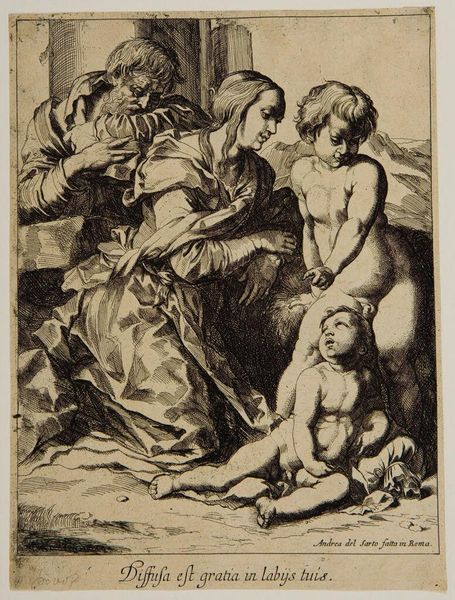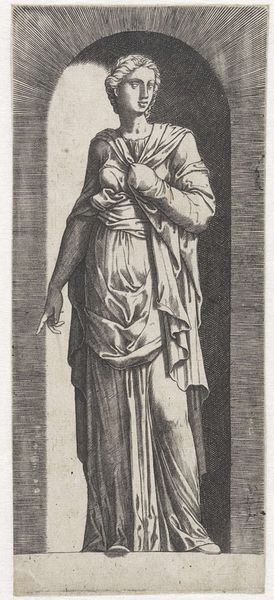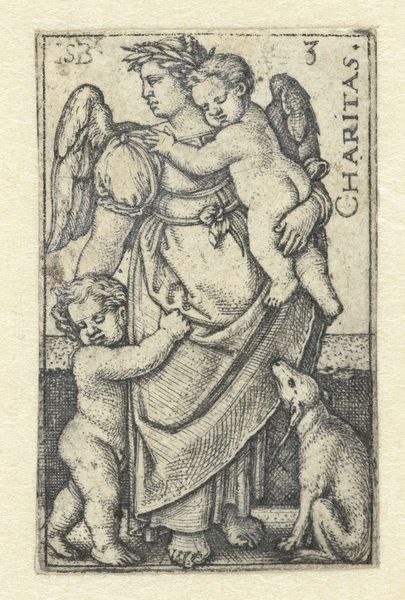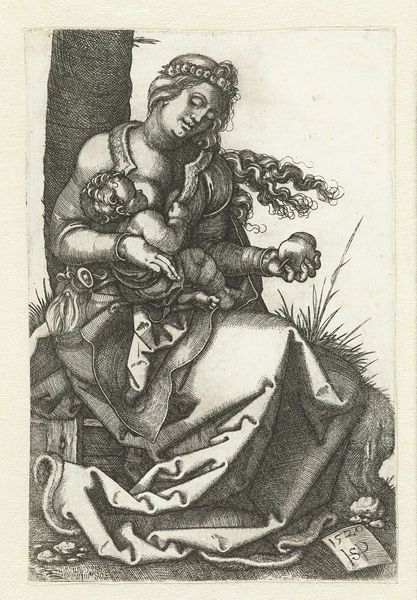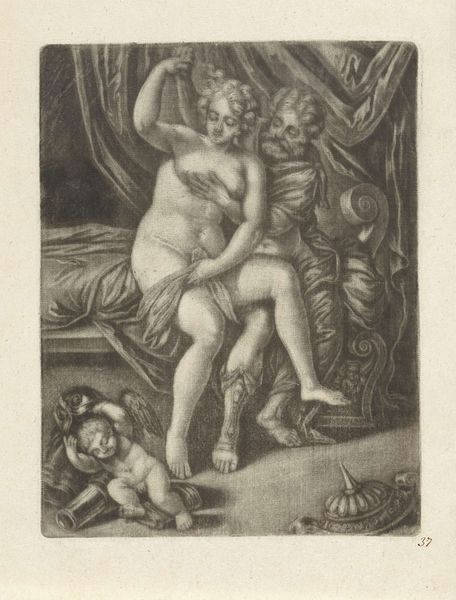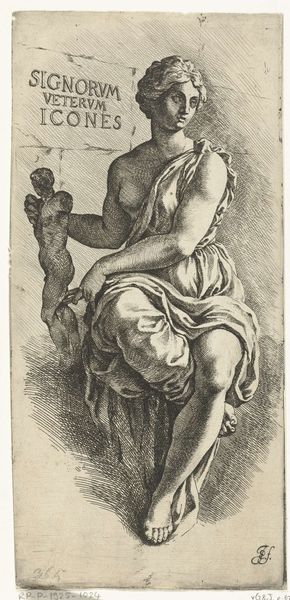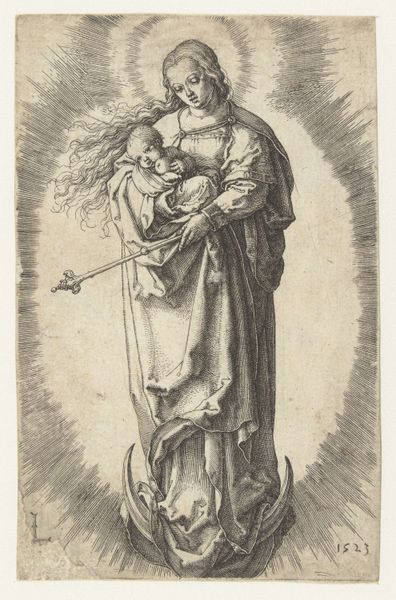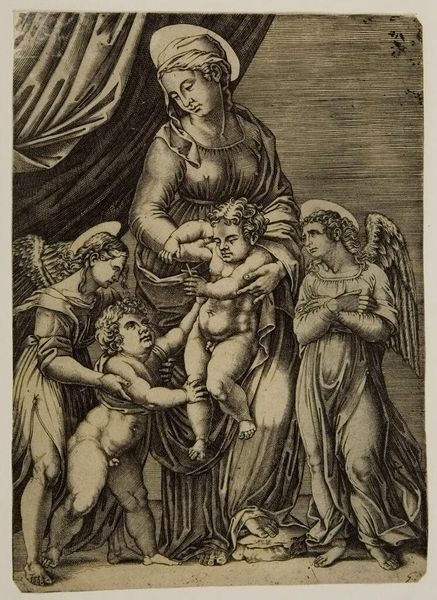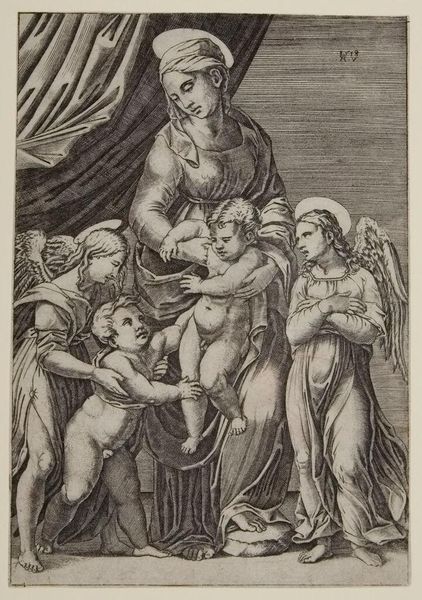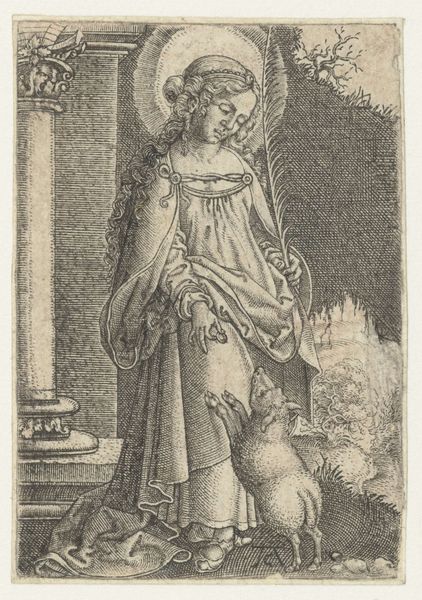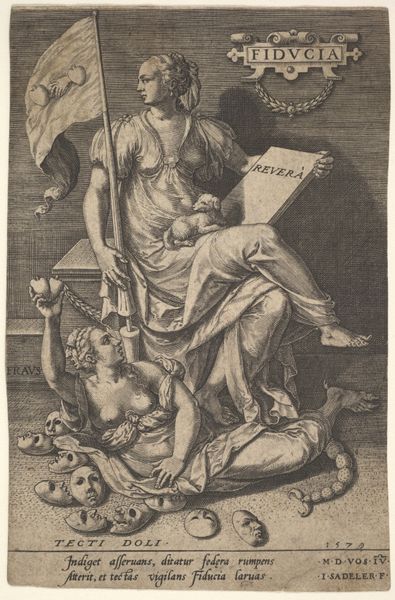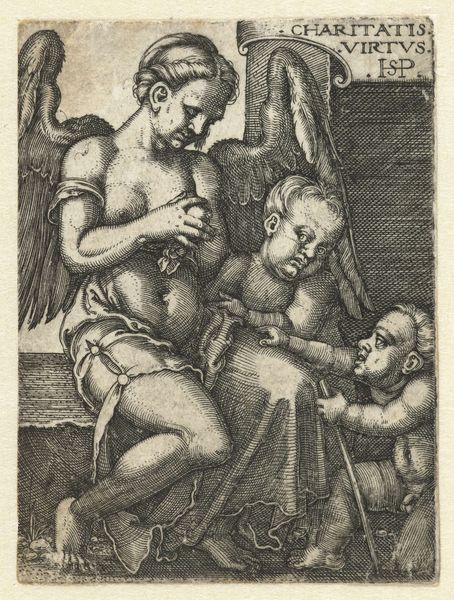
Vrouw als personificatie van Liefde (Caritas) met twee kinderen staand in nis 1510 - 1575
0:00
0:00
engraving
#
portrait
#
allegory
#
figuration
#
portrait drawing
#
italian-renaissance
#
engraving
Dimensions: height 215 mm, width 103 mm
Copyright: Rijks Museum: Open Domain
Editor: Here we have an engraving from between 1510 and 1575, entitled "Vrouw als personificatie van Liefde (Caritas) met twee kinderen staand in nis," which translates to "Woman as a personification of Love (Charity) with two children standing in a niche." It's unsigned, so attributed to Anonymous, and it's at the Rijksmuseum. There’s almost a statuesque quality to the main figure, a serene strength… I'm curious, what strikes you most about this work? Curator: You've picked up on that sense of strength perfectly. What strikes me is the fascinating contrast. On one hand, we have this classical composition and theme. The idealized form, the drapery, the allegory of Caritas - all very Renaissance. But there’s something... off, isn’t there? Something almost jarring about the way the artist renders the children, not as cherubic angels, but as almost, well, slightly awkward. Makes you wonder, doesn’t it, if the artist intended to subvert expectations ever so slightly? Editor: It does. They're not the chubby cherubs I expected. Do you think that was a commentary on earthly love, perhaps, compared to divine love? Curator: Perhaps. Or, perhaps, it was just an attempt to be more real, to show the challenges inherent in the concept of "Charity," even as they evoke these classical forms. Is "Charity" just serene stoicism? Does it require struggle, something less pretty? It makes you really think about what’s being offered here, what the artist truly wants us to consider beyond the simple title, doesn’t it? What will you take away from that visual argument? Editor: That tension between ideal and reality is really powerful, definitely something to consider further. I initially saw a symbol of pure love and serenity. Now, I feel it represents love, perhaps, with a hint of irony. Curator: Exactly! And that is the joy of encountering art like this – to shift perspective, isn't it? It nudges you to reflect on complexities beneath the surface. A reminder that sometimes, the most profound statements are cloaked in contradictions.
Comments
No comments
Be the first to comment and join the conversation on the ultimate creative platform.
